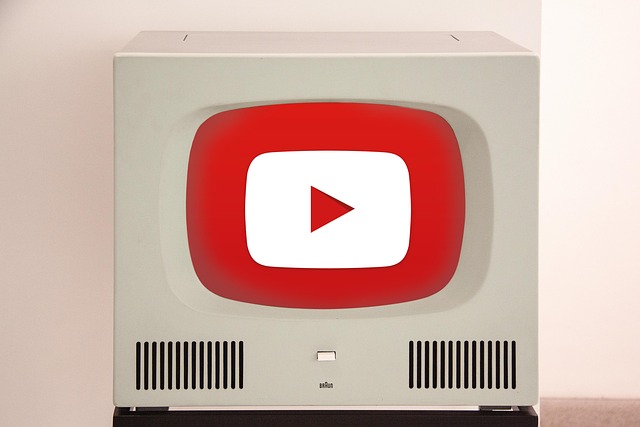How to Make Money on YouTube Without Showing Your Face

YouTube has become one of the most popular platforms for content creators to share their ideas, showcase their talents, and—most importantly—earn money. However, not everyone is comfortable being in front of the camera. If you’re looking to monetize your YouTube channel but prefer to remain anonymous or avoid showing your face, there are plenty of creative ways to do so. In this article, we’ll explore various strategies, content ideas, and tips to help you make money on YouTube without ever showing your face.
1. Why You Don’t Need to Show Your Face on YouTube
Many successful YouTubers have built thriving channels without ever appearing on camera. The key is to focus on delivering value through engaging content that resonates with your audience. Whether it’s through voiceovers, animations, or screen recordings, there are countless formats that allow you to stay behind the scenes while still attracting viewers and generating income.
Benefits of Not Showing Your Face
- Privacy: You can maintain anonymity and protect your identity.
- Focus on Content: Viewers will concentrate on the message rather than the presenter.
- Creative Freedom: Explore diverse formats like voiceovers, tutorials, and animations.
- Accessibility: Easier for introverts or those uncomfortable with public speaking.
2. Types of Content You Can Create Without Showing Your Face
Here are some popular content ideas that don’t require you to appear on camera:
A. Voiceover Videos
Voiceover videos rely on narration to guide the viewer through visuals, animations, or stock footage. This format works well for:
- Educational Content: Tutorials, how-to guides, or explainer videos.
- Storytelling: Share personal stories, fictional tales, or historical narratives.
- Commentary: Offer opinions on trending topics, movies, books, or current events.
Tools to Use:
- Adobe Premiere Pro or Final Cut Pro for video editing.
- Audacity or Descript for recording and editing voiceovers.
- Free stock footage websites like Pexels or Pixabay.
B. Screen Recording (Screencasts)
Screen recording involves capturing what’s happening on your computer screen. It’s perfect for:
- Tech Tutorials: Teach viewers how to use software, apps, or tools.
- Gaming Content: Share gameplay walkthroughs, tips, or reviews.
- Productivity Hacks: Demonstrate time-saving techniques or workflows.
Tools to Use:
- OBS Studio or Camtasia for screen recording.
- Canva or PowerPoint for creating overlays and graphics.
C. Animation and Motion Graphics
Animated videos are visually appealing and highly engaging. They’re ideal for:
- Explainer Videos: Simplify complex concepts using animations.
- Comedy Sketches: Create humorous short clips or cartoons.
- Children’s Content: Develop fun and educational videos for kids.
Tools to Use:
- Blender or After Effects for advanced animations.
- Vyond or Powtoon for beginner-friendly animation tools.
D. Podcast-Style Videos
If you enjoy talking about niche topics, consider turning your podcast into a YouTube video. Add visuals like text overlays, images, or stock footage to complement your audio.
Tips for Success:
- Choose a specific niche (e.g., true crime, self-improvement, business).
- Edit your audio to remove background noise and enhance clarity.
- Use subtitles or captions to improve accessibility.
E. Stock Footage Compilation Videos
Compile royalty-free stock footage, photos, or GIFs to create visually engaging videos. Examples include:
- Travel Vlogs: Showcase stunning destinations using stock travel footage.
- Motivational Videos: Combine inspiring quotes with uplifting visuals.
- Top Lists: Create countdowns or “best of” videos (e.g., “Top 10 Gadgets of 2023”).
Where to Find Stock Media:
- Shutterstock, iStock, or Videvo for high-quality footage.
- Unsplash or Freepik for free images and graphics.
F. ASMR or Audio-Focused Content
Autonomous Sensory Meridian Response (ASMR) videos focus on soothing sounds and auditory experiences. These can be created without showing your face by using microphones and sound effects.
Popular ASMR Ideas:
- Whispering, tapping, or crinkling sounds.
- Role-playing scenarios (e.g., spa treatments, haircuts).
- Relaxation guides or meditation sessions.
3. Monetization Strategies for Your YouTube Channel
Once you’ve built an audience, there are several ways to monetize your channel without relying on sponsorships or brand deals that might require showing your face.
A. Ad Revenue (YouTube Partner Program)
To qualify for the YouTube Partner Program (YPP), you need:
- At least 1,000 subscribers.
- 4,000 valid public watch hours in the past 12 months.
Once approved, you’ll earn money from ads displayed on your videos. Focus on creating high-quality content that keeps viewers engaged to maximize ad revenue.
B. Affiliate Marketing
Promote products or services related to your niche and earn commissions for every sale made through your referral link. For example:
- Tech channels can promote gadgets or software.
- Educational channels can recommend online courses or books.
Best Practices:
- Disclose affiliate links transparently.
- Only promote products you genuinely believe in.
C. Selling Digital Products
Create and sell digital products like eBooks, templates, or printables. For instance:
- A productivity channel could offer planners or checklists.
- An art channel could sell design assets or tutorials.
D. Crowdfunding (Patreon or Memberships)
Platforms like Patreon allow fans to support your work directly in exchange for exclusive perks. Alternatively, enable YouTube Memberships to offer badges, emojis, or early access to videos.
E. Licensing Your Content
If your videos feature unique visuals, music, or animations, other creators may want to license them for their projects. Websites like Pond5 or Shutterstock accept user-generated content.
4. Tips for Growing Your Channel Without Showing Your Face
Building a successful YouTube channel takes time and effort, regardless of whether you show your face. Here are some actionable tips to accelerate your growth:
A. Optimize Your Titles, Descriptions, and Tags
Use SEO best practices to ensure your videos rank higher in search results. Include relevant keywords and phrases that your target audience is likely to search for.
B. Invest in High-Quality Audio
Since your voice will often be the focal point, invest in a good microphone to ensure clear and professional-sounding audio.
C. Consistency Is Key
Upload videos regularly to keep your audience engaged and encourage repeat viewership. Aim for a consistent schedule (e.g., weekly uploads).
D. Engage With Your Audience
Respond to comments, ask for feedback, and create polls to foster a sense of community. This helps build loyalty and encourages viewers to subscribe.
E. Collaborate With Other Creators
Partner with other YouTubers in your niche to cross-promote content and reach new audiences. Even if neither of you shows your face, collaboration can still be effective.
5. Examples of Successful Faceless YouTubers
To inspire you further, here are examples of creators who have achieved success without showing their face:
- Marques Brownlee (MKBHD): While he does occasionally appear on camera, many of his tech review videos focus on product demonstrations rather than his face.
- The Infographics Show: Creates animated educational videos covering history, science, and pop culture.
- Whispering Woods ASMR: Specializes in relaxing ASMR content without showing the creator’s face.
- Screen Rant: Produces screen-recorded videos analyzing movies, TV shows, and gaming trends.
These examples demonstrate that creativity and consistency are more important than physical appearance.



